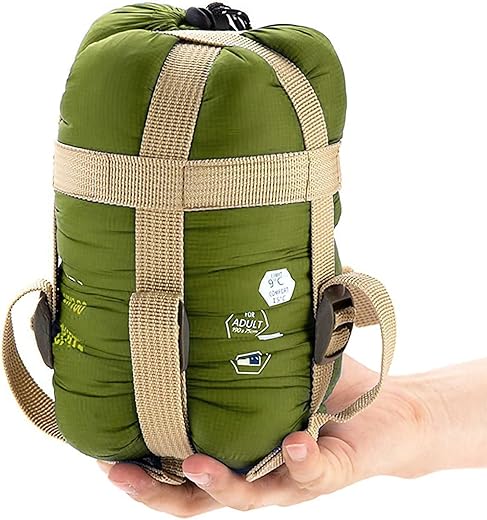
When you embark on a camping adventure, your sleeping bag is your cozy sanctuary under the stars, offering warmth and a restful night’s sleep amidst nature’s embrace. However, many outdoor enthusiasts often overlook the importance of proper care for this essential gear. Whether you’re a seasoned backpacker or a weekend warrior, keeping your sleeping bag in top condition is vital for ensuring it performs when you need it most. In this blog post, we’ll explore practical tips and strategies for caring for your camping sleeping bag, helping you extend its life and maintain its comfort—allowing you to focus on creating unforgettable memories in the great outdoors.



Understanding Your Sleeping Bag
When venturing into the great outdoors, selecting the right sleeping bag is crucial for a comfortable night’s rest. With various materials and insulation types available, it can be overwhelming to make the right choice. This section will delve into the particulars of sleeping bags, focusing on the two primary types of insulation: down and synthetic. We will also highlight the importance of tailoring your sleeping bag choice to your specific camping needs.
Types of Insulation: Down vs. Synthetic
Down Sleeping Bags
Down sleeping bags are filled with natural duck or goose feathers, which provide excellent insulation. They are coveted for their lightweight and packable nature, making them ideal for backpacking and long hikes. Here are some of their key features:
- Insulation Efficiency: Down offers an incredible warmth-to-weight ratio, meaning it retains heat very well while remaining lightweight.
- Compressibility: Down bags can be compressed into smaller sizes, making them easy to pack.
However, there are some drawbacks to consider:
- Moisture Sensitivity: Down loses its insulating properties when wet; therefore, it is crucial to keep them dry.
- Higher Price Point: Generally, down sleeping bags can be more expensive than their synthetic counterparts.
Recommended Model: The Big Agnes Anvil Horn 15 is a high-quality down sleeping bag that balances performance and weight, with a durable water-repellent finish to minimize moisture absorption.
Synthetic Sleeping Bags
Synthetic sleeping bags utilize man-made insulation materials, such as polyester, which mimic the insulation properties of down but offer unique advantages:
- Water Resistance: Synthetic bags retain insulation capabilities even when damp, making them ideal for wet conditions.
- Affordability: Often, synthetic sleeping bags are more budget-friendly compared to down options.
However, they also come with some downsides:
- Weight & Bulkiness: Synthetic bags tend to be heavier and less compressible than down ones, taking up more space in your pack.
- Durability: They may not have the same lifespan as high-quality down bags.
Recommended Model: The REI Co-op Flash 22 is an excellent example of a synthetic sleeping bag, offering outstanding warmth and weight savings at an accessible price point.
Comparison Table: Down vs. Synthetic
| Feature | Down Sleeping Bags | Synthetic Sleeping Bags |
|---|---|---|
| Insulation Material | Natural (duck or goose feathers) | Man-made (polyester) |
| Weight | Lightweight and compressible | Heavier and bulkier |
| Moisture Performance | Loses insulation when wet | Retains insulation even when damp |
| Price | Typically more expensive | More budget-friendly |
| Lifespan | Longer with proper care | Shorter than down |
Choosing the Right Bag for Your Camping Needs
Determining what type of sleeping bag fits your camping style can enhance your night’s sleep and overall camping experience. Here are some practical considerations:
- Climate: If you are camping in wet conditions, a synthetic bag is often the better choice. If you are heading out into cold, dry climates, a down bag will keep you warm without the bulk.
- Activity Type: For backpackers needing to save weight and space, down is typically preferred. Conversely, for family camping trips with minimal hiking, a heavier synthetic bag can work well.
- Budget: Many budget-friendly options are available in synthetic insulation. If you want to invest in a long-term product, consider a down bag, which can sometimes provide more value over time.
In summary, understanding the differences between down and synthetic sleeping bags is vital for making an informed purchase. Each type has distinct properties that cater to different camping preferences and environmental challenges. By choosing the right bag, you can enhance your outdoor experiences and ensure nights under the stars are as cozy as possible. Knowing your gear better also leads to improved care practices, ultimately extending the life of your investment.
Cleaning Your Sleeping Bag
Taking care of your sleeping bag is essential for maintaining its performance and longevity. Regular cleaning not only removes dirt and odors but also helps keep the insulation functioning effectively. This guide will walk you through every step of the cleaning process, from checking care labels to drying techniques.
Step 1: Checking the Care Label
Before you begin cleaning your sleeping bag, it’s crucial to check the care label inside the bag. The care label provides important information regarding washing instructions, recommended cleaning agents, temperature settings, and drying methods.
Common Care Label Symbols
- Washing Machine Safe: A washing machine icon with a splash of water means the sleeping bag can be machine washed.
- Hand Wash Only: A hand symbol indicates that the bag should be washed by hand only.
- Do Not Bleach: A triangle with an “X” means bleach should not be used.
- Tumble Dry Low: A square with a circle indicates the item can be tumble dried but on a low-heat setting.
Always follow these guidelines to avoid damaging your sleeping bag.
Step 2: Choosing the Right Cleaning Products
When it comes to cleaning your sleeping bag, selecting the appropriate products is critical. Avoid regular laundry detergents, which may leave residues that can harm insulation. Instead, opt for products specifically designed for sleeping bags or technical fabrics.
Recommended Cleaning Products:
- Nikwax Tech Wash: A soap designed for technical outdoor gear, which effectively cleans while enhancing water repellency.
- Grangers Down Wash: Perfect for down sleeping bags, it cleans with minimal impact on insulation performance.
- Gear Aid ReviveX: A detergent suitable for synthetic materials that leaves no residue and revives loft.
Make sure to read product labels to ensure compatibility with your sleeping bag’s materials.
Step 3: Machine Washing Your Sleeping Bag
If the care label allows machine washing, follow these steps:
Washing Instructions:
- Prepare the Washing Machine: Use a front-loading washing machine, as top loaders with an agitator can damage the fabric and insulation.
- Load the Bag: Make sure the sleeping bag fits comfortably in the machine without being overly cramped.
- Add Cleaning Agent: Measure the appropriate amount of your chosen cleaner according to the label instructions. For example, if using Nikwax Tech Wash, use 100ml per load.
- Select the Right Cycle:
- Water Temperature: Use cold or warm water (not exceeding 30°C/86°F).
- Cycle Type: Choose a gentle or delicate cycle to reduce wear on the materials.
- Rinse Thoroughly: Ideally, run an additional rinse cycle to ensure all soap is removed.
Note on Zippers and Velcro:
- Close Zippers: Always zip up the bag to protect it during the wash.
- Seal Velcro: Place a piece of fabric over Velcro areas to prevent snagging.
Step 4: Hand-Washing Techniques
If your sleeping bag’s care label requires hand washing or it’s particularly delicate, follow these steps:
Hand-Washing Instructions:
- Find a Suitable Space: Use a bathtub or a large container filled with cool to warm water.
- Dissolve Cleaner: Add your chosen detergent to the water and mix until fully dissolved.
- Immerse the Bag: Submerge the sleeping bag and gently agitate the water using your hands, ensuring that soap penetrates the fabric.
- Soak: Let it soak for about 15-30 minutes.
- Rinse: Drain the soapy water and refill the tub with clean water; gently press the bag to remove soap. Repeat until the water runs clear, then drain excess water.
Step 5: Drying Your Sleeping Bag Effectively
Proper drying is crucial to maintaining the loft and thermal efficiency of your sleeping bag’s insulation.
Drying Instructions:
- Tumble Dry: If the care label permits, place the sleeping bag in a front-loading tumble dryer on a low heat setting. Add a couple of clean tennis balls or dryer balls to help fluff the insulation as it dries.
- Check Drying Time: A typical drying time is 1-2 hours, but this can vary depending on factors like the bag’s fill and your dryer’s efficiency. Regularly check to ensure the bag isn’t overheating.
- Air Drying: If machine drying isn’t an option, hang the bag outdoors in a shady, well-ventilated area but avoid direct sunlight which can degrade the materials. Fluff the bag frequently during air drying to maintain loft.
Important Tips:
- Do Not: Use a heated area like a radiator, which can damage the bag.
- Storage: Once completely dry, store the sleeping bag loosely in a cotton storage sack to prevent compression of the insulation.
By following these detailed steps, you’ll keep your sleeping bag clean, fresh, and ready for your next outdoor adventure!
Storage Tips for Longevity
When it comes to maximizing the lifespan of your sleeping bag, proper storage is just as crucial as caring for it on your adventures. From selecting the right storage bags to maintaining ideal environmental conditions, following these best practices will ensure your sleeping bag remains in excellent condition for years to come.
Store Loosely in a Breathable Sack
One of the most effective methods for storing your sleeping bag is to keep it in a loose, breathable sack. This approach avoids any potential damage caused by prolonged compression, which can ruin the insulation properties of the bag.
Recommended Storage Bags:
- Sea to Summit Ultra-Sil Compression Sack: This lightweight bag allows for easy packing while providing breathable material that doesn’t trap moisture inside.
- REI Co-op Moab 20 Sleeping Bag Stuff Sack: Designed to keep your bag protected yet airy, this option provides adjustable straps to prevent unnecessary compression.
Storing your sleeping bag loosely will allow the insulating fibers to loft, ensuring they maintain their shape and effectiveness whenever you’re ready to hit the trails again. Look for sacks that are made from breathable materials, such as nylon or polyester, to encourage air circulation.
Avoid Compression
Long-term compression can lead to a reduction in insulation and increased wear and tear on your sleeping bag. It’s essential to avoid packing your sleeping bag into its stuff sack for extended periods, particularly if the insulation is made from down or synthetic materials.
Why Compression Is Detrimental:
- Down Insulation: Prolonged compression can crush the down feathers, reducing their ability to trap heat.
- Synthetic Insulation: Similarly, synthetic fibers may clump together, leading to cold spots.
Compression vs. Non-Compression Comparison:
| Type of Storage | Benefits | Downsides |
|---|---|---|
| Compression Sack | Compact, easy to carry | Reduces insulation efficiency in the long term |
| Loose Storage Sack | Maintains insulation loft and effectiveness | Bulky for backcountry travel |
To promote the longevity of your bag, store it in a dedicated storage sack on a shelf or in a closet rather than the stuff sack it came with.
Keep It Cool and Dry
Environmental conditions play a significant role in the longevity of your sleeping bag. Storing your sleeping bag in a cool, dry place helps prevent mold growth, mildew, and degradation of materials.
Ideal Storage Temperature and Humidity:
- Temperature: Ideally, store your sleeping bag in a location that is between 60°F to 70°F (15°C to 21°C).
- Humidity: Aim for a relative humidity below 50%. Consider using a dehumidifier if you live in a humid area.
Suggested Storage Locations:
- Indoor Closets: Perfect for being out of direct sunlight and temperature extremes.
- Vacant Room: If your home has a spare room, this may provide a cool and dry location that’s seldom occupied.
Additionally, keep your sleeping bag away from direct sunlight during extended storage, as UV rays can degrade both outer fabrics and insulation materials over time.
Check for Cleaning Instructions
Each sleeping bag comes with specific care instructions that help ensure longevity. Before storing your sleeping bag, make sure it is clean and dry. Brands like Marmot and Big Agnes all provide care guidelines on their websites specific to their products.
Typical Cleaning Steps:
- Loosely Fill the Washing Machine: Use a front-loading washer without an agitator.
- Use Mild Detergent: Opt for a gentle cleaner like Nikwax Down Wash or Granger’s Performance Wash.
- Tumble Dry on Low Heat: Consider adding dryer balls to fluff and restore loft.
Maintaining cleanliness helps avoid unpleasant odors and degradation of materials caused by oils or dirt.
By following these best practices for storing your sleeping bag, you can significantly extend its life and performance, making it your trustworthy companion for all your outdoor adventures.
Key Takeaways for Extended Life and Comfort
In conclusion, taking the time to properly care for your camping sleeping bag not only maximizes its lifespan but also ensures a more enjoyable and comfortable outdoor experience. By being mindful of the specific materials, cleaning routines, and optimal storage practices, you can maintain its performance and keep it in top condition for all your future adventures. Embrace these care tips, and you’ll be well-equipped to experience countless peaceful nights beneath the stars.




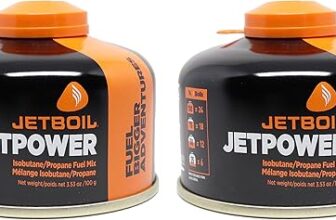
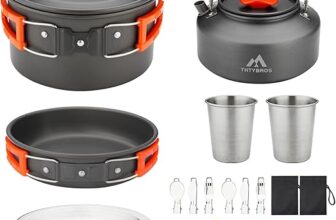
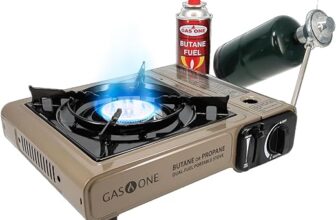
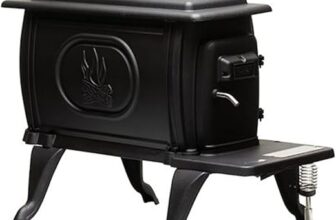

Hey! Great article! Do you have any other reading recommendations for camping gear maintenance? I’m looking to expand my knowledge!
Could you expand on the best way to clean down sleeping bags? I’ve heard some conflicting advice and want to make sure I’m doing it right!
Absolutely! When it comes to cleaning down sleeping bags, it’s crucial to use a gentle detergent and avoid fabric softeners. Washing in a front-loading machine and drying it with tennis balls helps fluff it back up. I’ll make sure to include more detailed info on that in a future post!
If you’re into backpacking, I highly recommend checking out the Big Agnes Anvil Horn 15 Sleeping Bag! It’s super lightweight and packs down really small, perfect for long hikes!
I’ve been using the REI Co-op Trailbreak 20 Sleeping Bag and it’s been a game changer! I followed some of the tips you mentioned and it’s held up great after multiple trips!
Thanks for sharing your experience! The REI Co-op Trailbreak is a solid choice for keeping warm on those chilly nights. Glad the tips helped!
Has anyone tried using a sleeping bag liner? I’ve heard they can really help with keeping your sleeping bag clean and adding warmth. Would love to hear more about that!